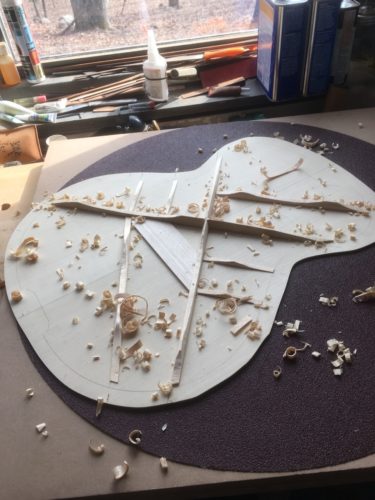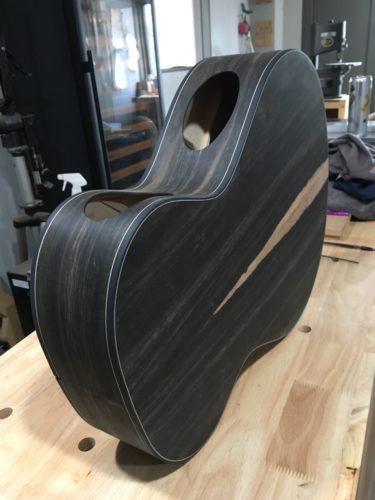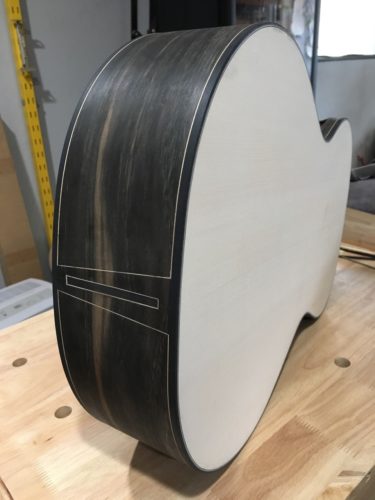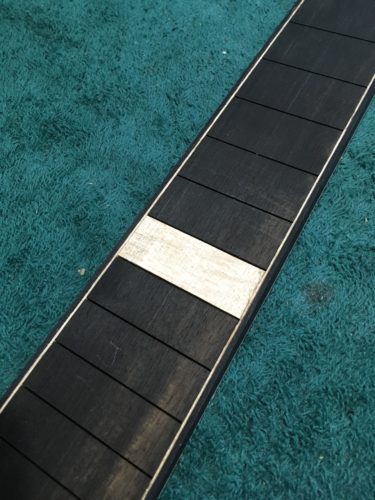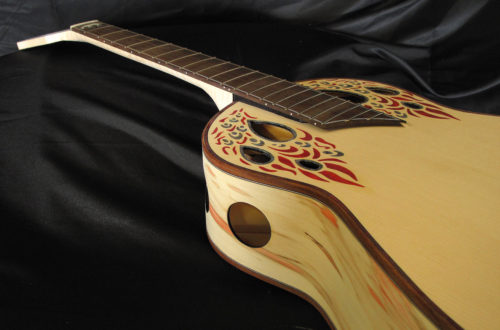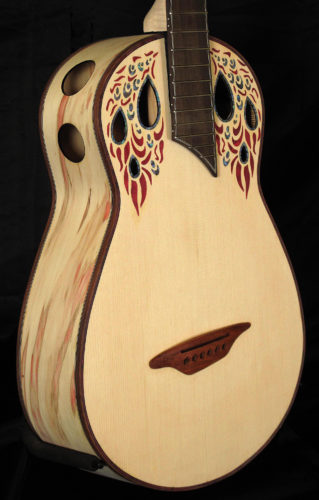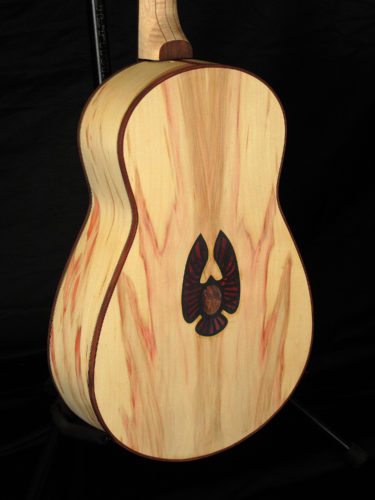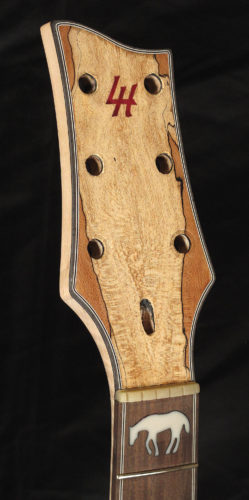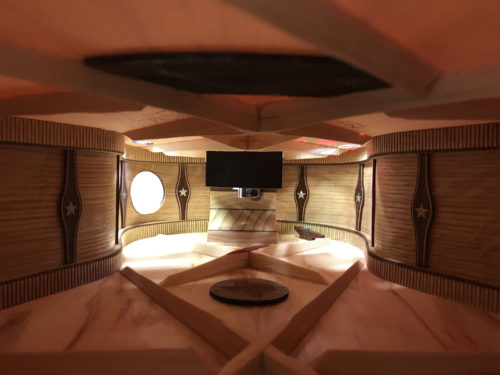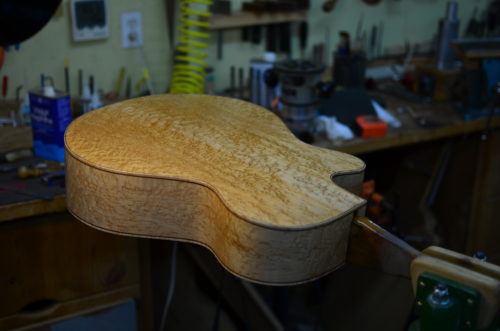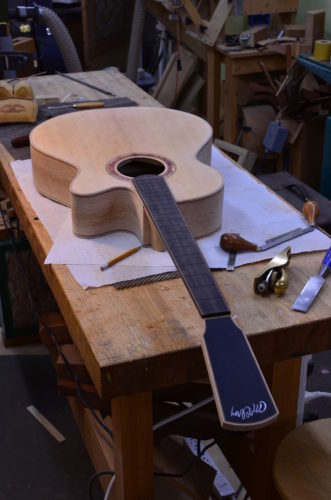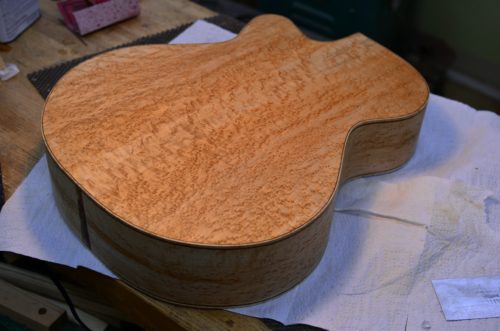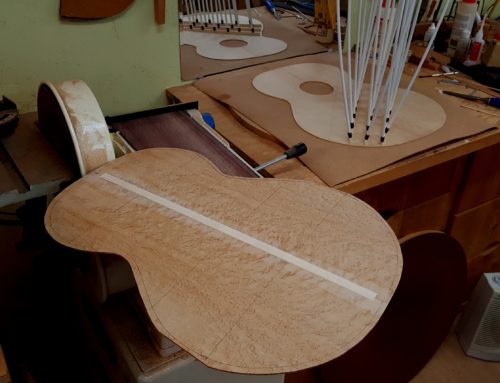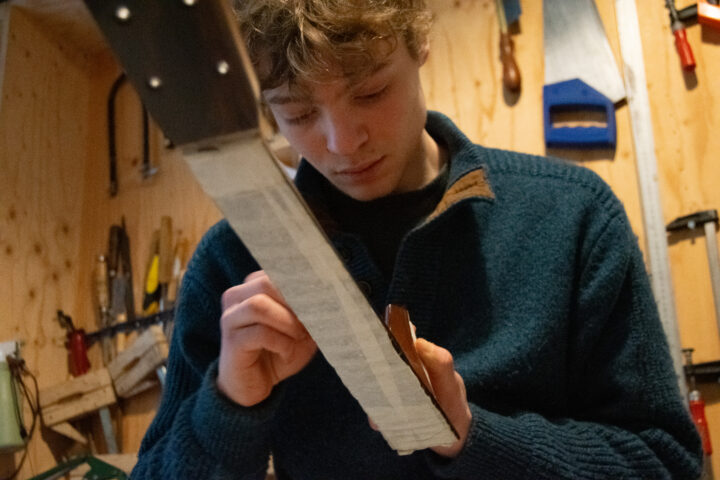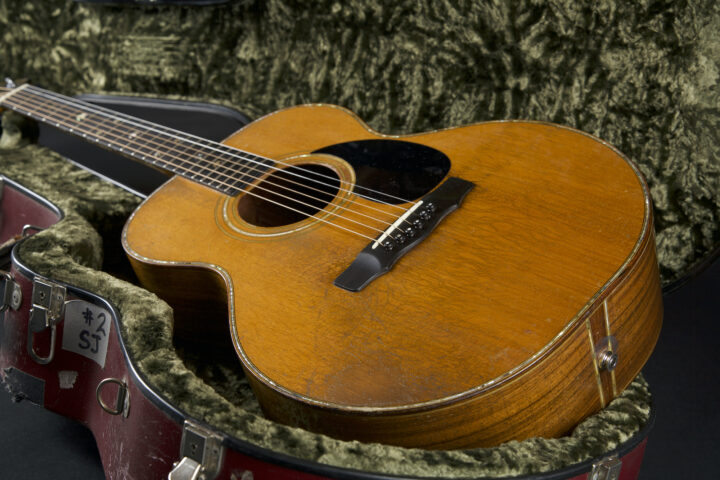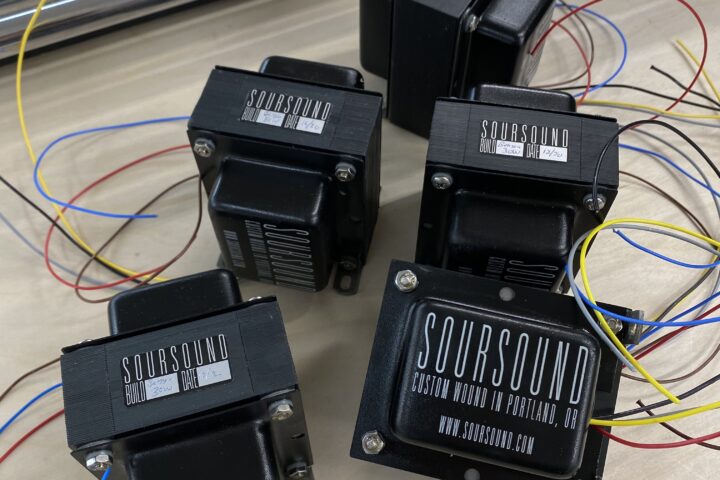We’re doing something different with the Bench Press for a stretch here. With the second annual La Conner Guitar Festival fast-approaching, we figured it would be fun to reach out to some of the luthiers we’re looking forward to seeing (again) for a preview of what they have up their sleeves for the show. With a decent head start, we’ve managed to get an illuminating look into what a builder puts into getting ready to showcase their work, shoulder to shoulder with their peers and the fanatics who’ll descend upon the sleepy burg of La Conner come the second weekend in May. Look for installments of the column featuring two or three luthiers – including Sam Guidry, Isaac Jang and Linda Manzer – over the next month or so leading up to the show.
We asked just one question: Are you working on anything special for La Conner?
Eric Weigeshoff, Skytop Guitars
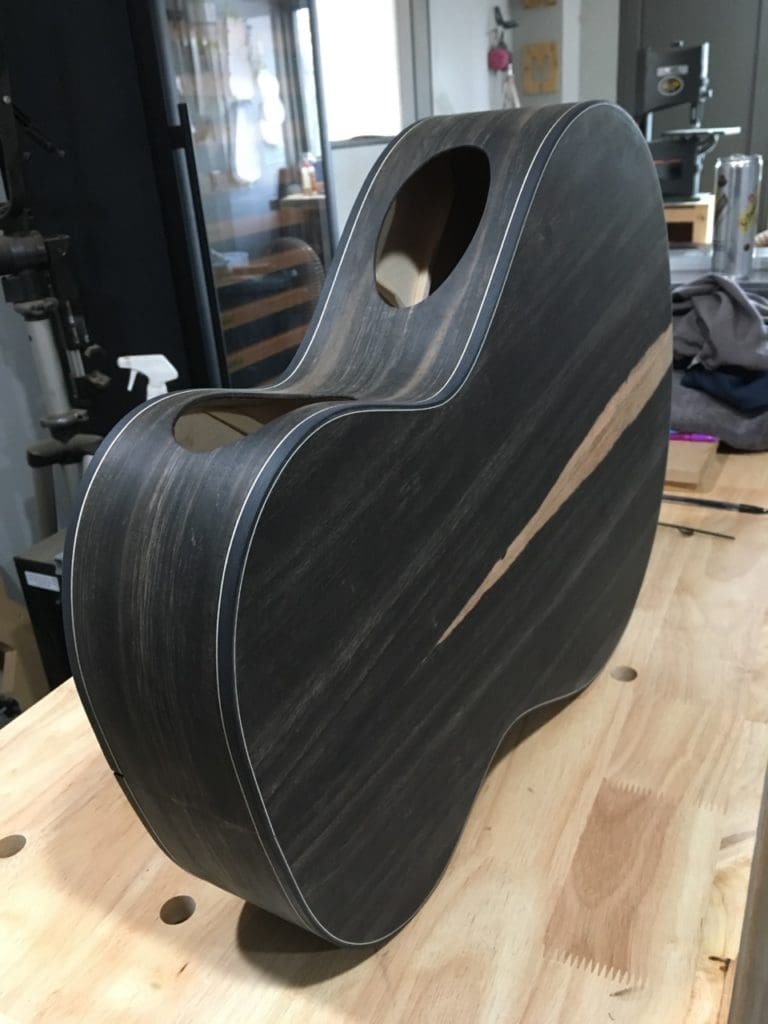
Right now I’m working on a Grand Concert sized guitar that I’m calling “The Dark Side of the Moon.”
I got a few great sets of Alpine Moon spruce from Switzerland…it’s such a great tonewood–really resonant tap tone, it rings clear like a bell. I was looking for a set for the back and sides that would complement the Moon spruce both aesthetically and tonally, and I found a set of dark Gabon ebony with a striking pointed line of light sap down the back. Normally, I bind my guitars and ukeleles with koa, but I decided to go with an all black and white scheme for the instrument, so I went with ebony with a thin line of maple purfling. I continued the purfling at the end graft, and inlayed a vertical piece of ebony surrounded by maple in the center. The fretboard is ebony, with the same maple line continuing and joining a European maple 12th fret marker, which has become my signature. Headstock and bridge are also Gabon ebony, Honduran mahogany for the neck.
I braced it with Sitka Spruce in my fingerstyle pattern, which really keeps the mid-tones clean while not harming the high and low end. It gives it a really great attack with a light touch. The closed box is incredibly loud and resonant, it’s probably the loudest guitar that I’ve made. Looking forward to getting it into finish and together!
There was such a great turnout and an awesome vibe at La Conner last year, and I’m really excited that Shirley and Brent invited me back for 2018. See you in La Conner!
Chris Jenkins, Lame Horse Instruments
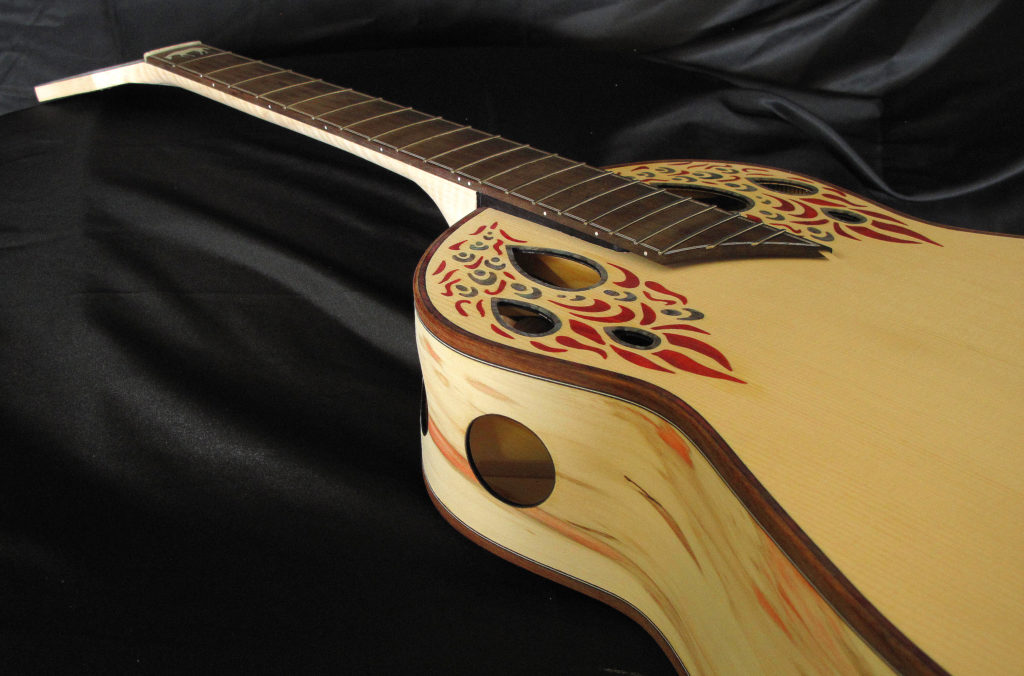
When we received our first invitation from the European Guitar Builders Guild to the Holy Grail show in Berlin in 2016 we were impressed with a special exhibition there called the “Local Woods Challenge.” Luthiers from all over the world built guitars from woods native to their homelands, ignoring the traditional rosewood and ebony species, many of which are endangered or restricted. We vowed that if we were invited back to Berlin, we would enter that Local Wood Challenge with a guitar made entirely of Texas wood. We are on our way back there the weekend before the La Conner Show, and we will be exhibiting that guitar in Berlin and La Conner. We decided to go one step further than just a guitar of Texas wood. We wanted to make it as interesting as we could, and celebrate the struggle for Texas independence back in 1836. We used wood from all over the Lone Star State:
- Ambrosia box elder (Acer negundo) from near our home in North Central Texas, for back and sides
- Texas ebony (Ebenopsis ebano) from the Rio Grande Valley of far South Texas, for the fingerboard, bindings, access panel cover, veneer on back of headplate, and side braces
- Engelmann spruce (Picea engelmannii) from the Davis Mountains of far West Texas
- Canadian sawtooth maple from the “Lost Maples” area of Central Texas, for the neck and head plate
- White oak from East Texas to line the inside
We used dyed blue abalone and red pearl polyester for the 100 pieces of inlay in the rosette to symbolize the bravery and blood shed by the 185 Texas patriots at the Alamo, and the 400 Texas soldiers at Goliad. The Alamo defenders held 3,500 of Antonio López de Santa Anna’s soldiers at bay for 13 days, until they were all finally killed, and the 400 Texas soldiers who were taken prisoner at the Battle of Goliad were put to death by firing squad by Santa Anna on Palm Sunday,1836. But Texans rose up like the Phoenix inlaid on the back of this guitar at San Jacinto a little over a month later to rout Santa Anna’s army and win independence. An important factor in that victory was the distraction of Santa Anna as the attack started by Emily Morgan, the Yellow Rose of Texas. This guitar is named for her.
Brent McElroy, McElroy Guitars
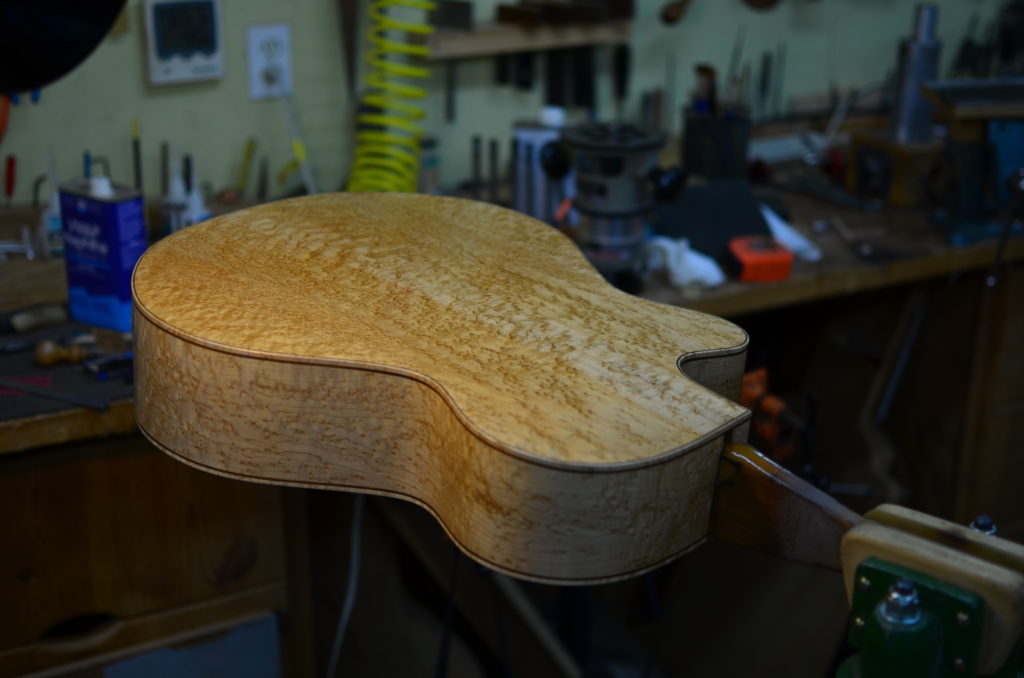
Brent is building a Standard Model with Cutaway:
- Top: Bearclaw Sitka Spruce
- Back & Sides: Birdseye Maple
- Neck, Honduran Mahogany with Ebony headstock veneer
- Fingerboard & Bridge: Ebony
There has been an unjustifiable stigma about maple as a flattop guitar tonewood for many years. I’ve been building beautiful sounding maple guitars (some of my best) throughout my career, but always in limited numbers, only because they were always a hard sell. So why is there this stigma? I believe it might be that the big guitar manufacturers probably used the same specs for their maple guitars as they did for all of the other guitars they manufactured. The results would produce a dry, somewhat harsh tone. Great for a blues guitar, but for everything else, not so great. Now, on the other hand, an individual luthier can thickness and tune the plates to bring out the beautiful tone that is hiding within the mMaple.
So I believe the tide is turning. Since the new CITES regulations came into effect (all species of rosewood and bubinga are now protected under CITES Appendix II), I’ve seen more luthiers building with maple, and they are liking it! That’s because these guitars are not only visually stunning, they are also beautiful sounding. The more guitar players are exposed to this new wave of maple guitars, the more they will change their preconceptions of what maple sounds like (this preconception of tone is often described in the lutherie community as psycho-acoustics). . . 😉
